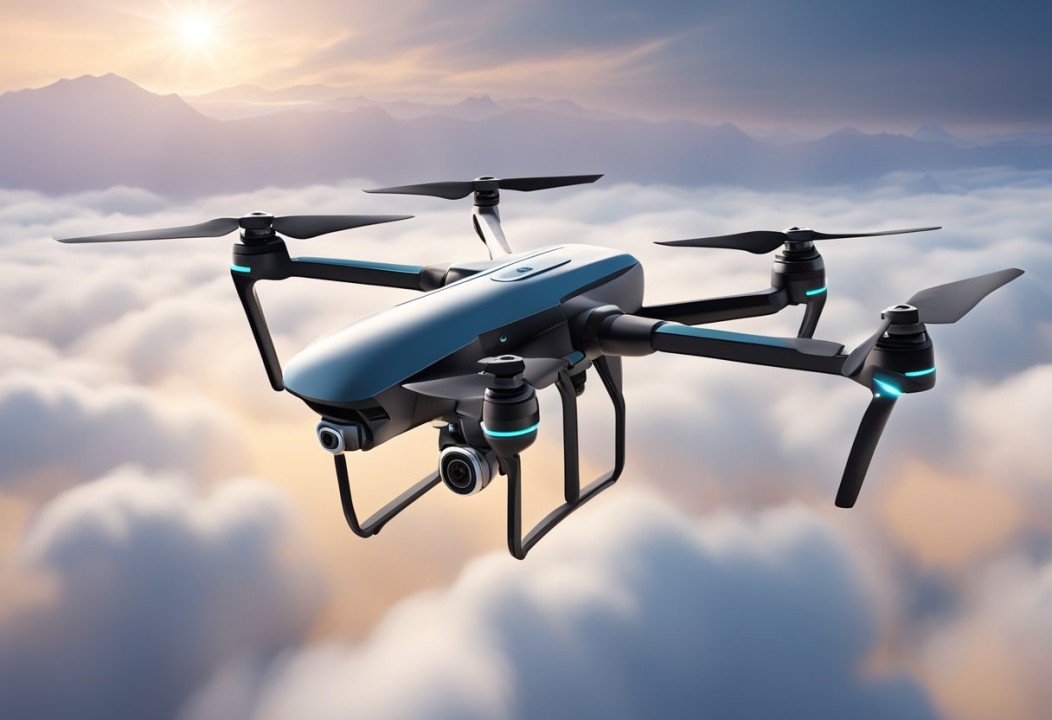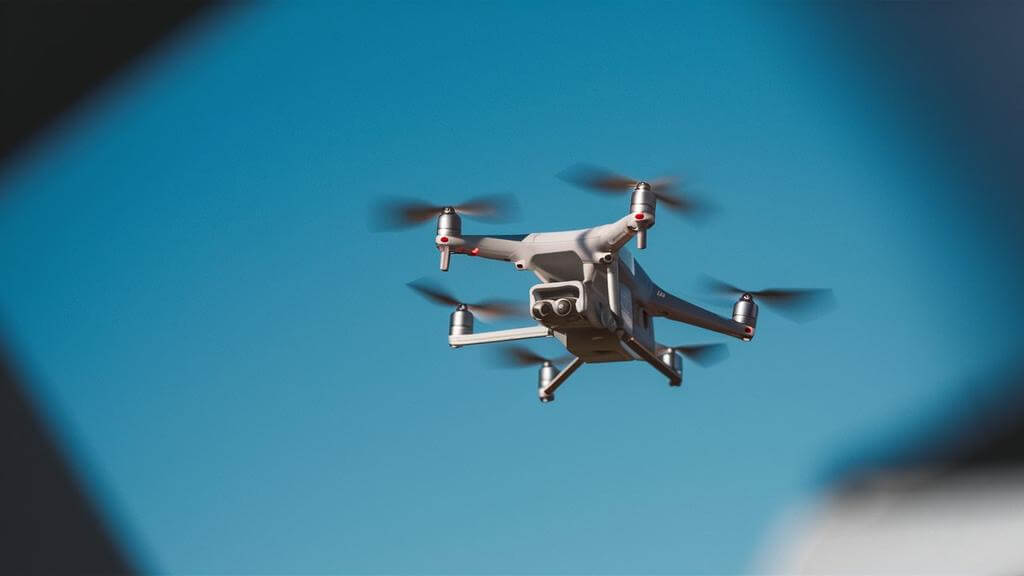Introduction
How Far Can a Drone Fly Drones have reformed different enterprises, from photography and videography to agribusiness and crisis administrations. One of the most often posed inquiries by drone lovers and experts the same is, “How far might a robot at any point fly?” The response to this question relies upon different variables, including the kind of robot, battery duration, signal reach, ecological circumstances, and guidelines. These variables exhaustively give a far-reaching comprehension of robot flight range.

Sorts of Robots and Their Flight Reaches
Buyer Robots
Buyer drones are commonly utilized for sporting purposes, for example, airborne photography and side interest flying. The flight scope of these robots can shift altogether:
- Passage Level Drones: These are reasonable and frequently have a restricted scope of around 100 to 500 meters. Models incorporate the DJI Tello and Hubsan X4.
- Mid-Reach Drones: Further developed than passage-level models, mid-range drones like the DJI Mavic Scaled Down and Parrot Anafi can fly up to 4 to 10 kilometers.
- Very good quality Drones: Top-of-the-line shopper drones, like the DJI Ghost 4 Star and DJI Mavic Air 2, can arrive at distances of up to 10 to 15 kilometers.
Business Robots
Business drones are utilized for additional requesting applications, like looking over, planning, and conveyance administrations. They are furnished with trend-setting innovation to broaden their flight range:
- Modern Drones: Robots like the DJI Matrice series and senseFly eBee can accomplish scopes of as much as 20 kilometers or more, contingent upon their arrangement and reason.
Factors Affecting Robot Flight Reach
Battery Duration
Battery duration is perhaps the most basic variable that decides how far a robot can fly. Most shopper drones make some flight memories of 20 to 30 minutes on a solitary charge. Nonetheless, very good quality models and business robots can have stretched-out flight times because of bigger batteries or high-level power in the executive’s frameworks.
Signal Reach
The distance a robot can fly is likewise restricted by the scope of its controller signal. Shopper drones commonly utilize radio frequencies, for example, 2.4 GHz and 5.8 GHz to speak with the regulator. The reach can be impacted by impedance from other electronic gadgets, structures, and normal deterrents.
Natural Circumstances
Weather patterns play a huge part in drone flight execution. Wind, downpours, and outrageous temperatures can diminish battery proficiency and affect the security and control of the robot. Flying in ideal weather patterns assists with expanding the robot’s flight range.

Guidelines and Legitimate Limitations
In numerous nations, some guidelines limit how far and high robots can fly. For instance, in the US, the Government Aeronautics Organization (FAA) expects robots to stay inside the visual view (VLOS) of the administrator, which normally limits the flight reach to around 500 meters to 1 kilometer.
Drone Innovation and Highlights
Present-day drones are outfitted with different innovations that can broaden their flight range. Elements like GPS, deterrent evasion, and return-to-home (RTH) capacities guarantee more secure and more solid flights, significantly over longer distances.
Boosting Your Robot’s Flight Reach
To capitalize on your robot’s flight range, think about the accompanying tips:
- Pre-Flight Planning: Plan your flight way and guarantee that the course is liberated from impediments and obstruction.
- Battery Management: Consistently start with a completely energized battery and screen the battery level during flight.
- Optimal Conditions: Fly in great weather patterns and stay away from areas of strength or downpours.
- Signal Boosters: Utilize signal sponsors or reach extenders to upgrade the correspondence between the robot and the regulator.
- Firmware Updates: Keep your robot’s firmware refreshed to profit from the most recent exhibition upgrades and elements.
Expanded Reach Applications
With progressions in drone innovation, the applications for long-range drones have extended fundamentally. For example, in farming, drones are utilized for crop checking and splashing pesticides over huge fields. The capacity to cover huge regions rapidly and productively is significant for current ranchers, permitting them to keep up with their yields more. How Far Can a Drone Fly Also, in the field of search and salvage, drones with stretched-out reaches can be conveyed to find missing people in remote or perilous regions, giving basic ongoing information to safeguard groups.
Improving Robot Capacities with Innovation
Innovation plays a significant part in improving the capacities of robots. Developments like better battery innovation, lightweight materials, and high-level route frameworks have all added to expanding the flight scope of present-day drones. For instance, lithium-polymer (LiPo) batteries are generally utilized in rambles because of their high energy thickness and lightweight nature, permitting robots to fly longer distances without compromising execution. Moreover, headways in simulated intelligence and AI have empowered robots to explore complex conditions independently, further expanding their functional reach.

The Job of Satellite Network
A satellite network is another mechanical headway that can decisively increment drone flight ranges. By utilizing satellite interchanges, robots can keep an association with their administrators over immense distances, a long way past the impediments of conventional radio recurrence signals. This innovation is especially helpful for applications in distant regions where ordinary correspondence foundation is missing, for example, in untamed life observing, debacle reaction, and natural examination.
Administrative Difficulties and Arrangements
While mechanical headways keep on pushing the limits of robot capacities. Administrative systems should keep speed to guarantee protected and mindful utilization of this innovation. Numerous nations have rigid guidelines that limit how far and high robots can fly, principally to forestall clashes with monitored airplanes and to safeguard public security. In any case, a few administrative bodies are investigating answers for empowering past visual-view (BVLOS) tasks, which would permit robots to fly more prominent distances while as yet keeping up with security principles. How Far Can a Drone Fly Carrying out these guidelines will require vigorous frameworks for drone traffic the executives and administrators preparing.
Future Possibilities for Long-Reach Robots
The eventual fate of long-range drones looks encouraging as innovation keeps on developing. Organizations are putting vigorously in innovative work to make drones with considerably longer flight ranges, more prominent payload limits, and improved independent abilities. Before long, we can hope to see drones assuming an undeniably significant part in different ventures, from operations and transportation to ecological protection and crisis reaction. The potential for development is huge, and the continuous progressions will probably prompt new applications and further developed efficiencies.
Understanding how far a robot can fly includes thinking about numerous elements, from the kind of robot and its battery duration to ecological circumstances and administrative requirements. As innovation progresses, the potential for longer flight ranges increments, opening up additional opportunities for both shopper and business applications. By remaining informed about the most recent turns of events and complying with best practices and guidelines, drone administrators can expand the presentation and utility of their robots. Whether utilized for diversion, agribusiness, search, and salvage, or different purposes. The extending abilities of robots keep on making them irreplaceable devices in our cutting-edge world.

Conclusion
The flight scope of a robot relies upon a mix of elements, including the sort of robot. Battery duration, signal reach, natural circumstances, and administrative limitations. By understanding these variables and going to the proper lengths. Drone administrators can amplify their robot’s flight potential and accomplish protected and effective flights. How Far Can a Drone Fly Whether you are a specialist or an expert, knowing how far your robot can fly will assist you in capitalizing on this unimaginable innovation.
Read More: Is ChatGPT Down? What to Do When AI Goes Silent
FAQs
Shopper drones commonly have a flight range between 100 meters and 15 kilometers, contingent upon the model.
Key elements incorporate battery duration, signal reach, natural circumstances, and administrative limitations.
Indeed, wind, downpours, and outrageous temperatures can decrease battery proficiency and affect flight security.
Numerous nations expect robots to remain inside the administrator’s visual view, regularly restricting the reach to 500 meters to 1 kilometer.
Utilize signal supporters, guarantee ideal weather patterns, oversee battery duration effectively, and keep your robot’s firmware refreshed.

